Photo

Woomy!
14 notes
·
View notes
Photo

Weekly villager prompt: Marty!
52 notes
·
View notes
Photo

Weekly prompt: Bluebear!
9 notes
·
View notes
Photo



Newest addition! 💚💛
3 notes
·
View notes
Photo

I decided to make my own version of a Nintendo Switch Lite using the background from Pocket Camp!
17 notes
·
View notes
Photo




37 notes
·
View notes
Text
It’s 2019!
And it’s time again for me to remind you all:
♥♥ NATSUME’s “HARVEST MOON” GAMES AREN’T THE MAIN SERIES ANYMORE! ♥♥ Natsume’s been advertising their “New Year Plans” and it’s time again for me to advertise that if you actually want the “Harvest Moon” experience, you need to be looking at the history of “Bokujou Monogatari” (Its ORIGINAL Japanese title) Sal Romano (owner/writer @ Gematsu) understands! And so should you !

196 notes
·
View notes
Photo

Hello Tumblr. It’s been a while. Have a doodle. Leave a suggestion for other doodles. ouo
2 notes
·
View notes
Text
Parker Solar Probe is Go for Launch
Tomorrow, Aug. 11, we’re launching a spacecraft to touch the Sun.
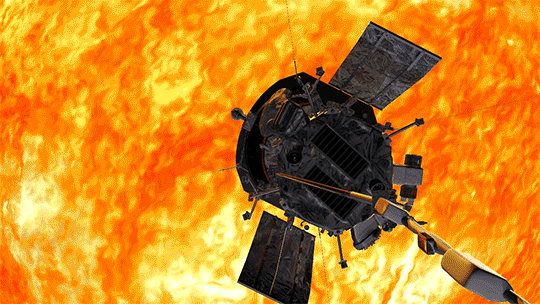
The first chance to launch Parker Solar Probe is 3:33 a.m. EDT on Aug. 11 from Space Launch Complex 37 at Cape Canaveral Air Force Station in Florida. Launch coverage on NASA TV starts at 3 a.m. EDT at nasa.gov/live.
After launch, Parker Solar Probe begins its daring journey to the Sun’s atmosphere, or corona, going closer to the Sun than any spacecraft in history and facing brutal heat and radiation.
Though Parker Solar Probe weighs a mere 1,400 pounds — pretty light for a spacecraft — it’s launching aboard one of the world’s most powerful rockets, a United Launch Alliance Delta IV Heavy with a third stage added.
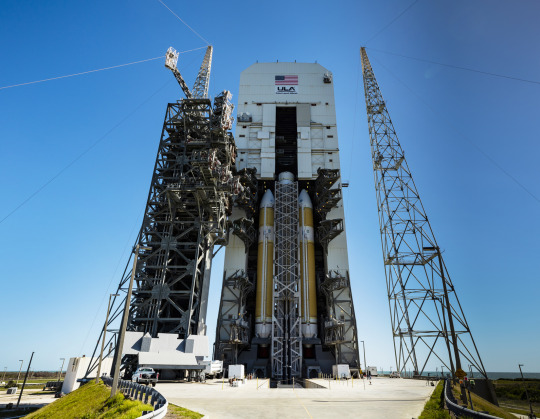
Even though you might think the Sun’s massive means things would just fall into it, it’s surprisingly difficult to actually go there. Any object leaving Earth starts off traveling at about 67,000 miles per hour, same as Earth — and most of that is in a sideways direction, so you have to shed most of that sideways speed to make it to the Sun. All that means that it takes 55 times more launch energy to go to the Sun than it does to go to Mars. On top of its powerful launch vehicle, Parker Solar Probe will use seven Venus gravity assists to shed sideways speed.
Even though Parker Solar Probe will lose a lot of sideways speed, it’ll still be going incredibly fast as its orbit draws closer to the Sun throughout its seven-year mission. At its fastest, Parker Solar Probe will travel at 430,000 miles per hour — fast enough to get from Philadelphia to Washington, D.C. in one second — setting the record for the fastest spacecraft in history.

But the real challenge was to keep the spacecraft from frying once it got there.
We’ve always wanted to send a mission to the corona, but we literally haven’t had the technology that can protect a spacecraft and its instruments from its scorching heat. Only recent advances have enabled engineers to build a heat shield that will protect the spacecraft on this journey of extremes — a tricky feat that requires withstanding the Sun’s intense radiation on the front and staying cool at the back, so the spacecraft and instruments can work properly.
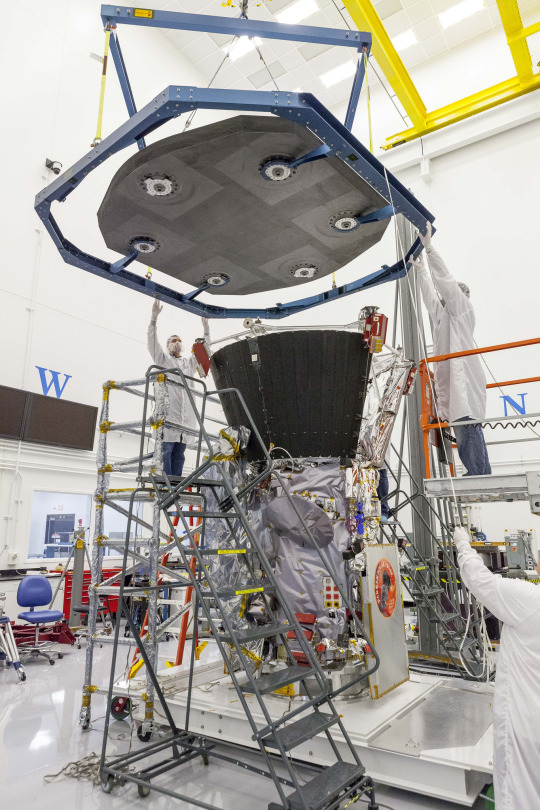
The 4.5-inches-thick heat shield is built like a sandwich. There’s a thin layer of carbon material like you might find in your golf clubs or tennis rackets, carbon foam, and then another thin piece of carbon-carbon on the back. Even while the Sun-facing side broils at 2,500 degrees Fahrenheit, the back of the shield will remain a balmy 85 degrees — just above room temperature. There are so few particles in this region that it’s a vacuum, so blocking the Sun’s radiation goes a long way towards keeping the spacecraft cool.
Parker Solar Probe is also our first mission to be named after a living individual: Dr. Eugene Parker, famed solar physicist who in 1958 first predicted the existence of the solar wind.

“Solar wind” is what Dr. Parker dubbed the stream of charged particles that flows constantly from the Sun, bathing Earth and our entire solar system in the Sun’s magnetic fields. Parker Solar Probe’s flight right through the corona allows it to observe the birth of the very solar wind that Dr. Parker predicted, right as it speeds up and over the speed of sound.
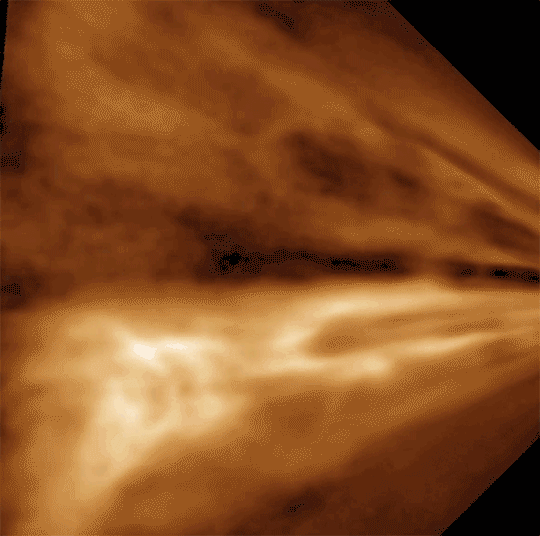
The corona is where solar material is heated to millions of degrees and where the most extreme eruptions on the Sun occur, like solar flares and coronal mass ejections, which fling particles out to space at incredible speeds near the speed of light. These explosions can also spark space weather storms near Earth that can endanger satellites and astronauts, disrupt radio communications and, at their most severe, trigger power outages.
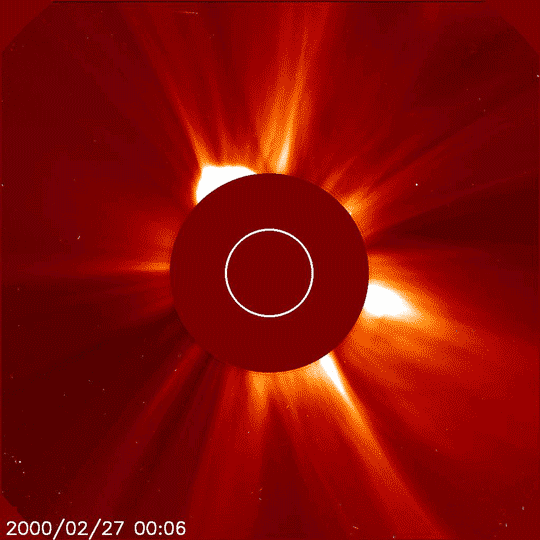
Thanks to Parker Solar Probe’s landmark mission, solar scientists will be able to see the objects of their study up close and personal for the very first time.
Up until now, all of our studies of the corona have been remote — that is, taken from a distance, rather than at the mysterious region itself. Scientists have been very creative to glean as much as possible from their remote data, but there’s nothing like actually sending a probe to the corona to see what’s going on.
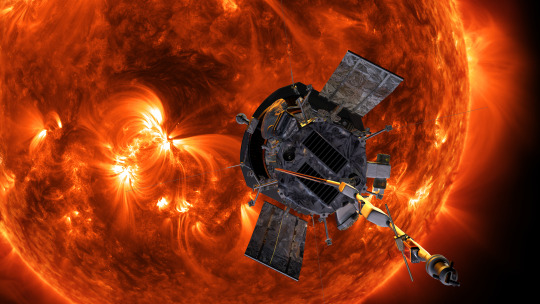
And scientists aren’t the only ones along for the adventure — Parker Solar Probe holds a microchip carrying the names of more than 1.1 million people who signed up to send their name to the Sun. This summer, these names and 1,400 pounds of science equipment begin their journey to the center of our solar system.
Three months later in November 2018, Parker Solar Probe makes its first close approach to the Sun, and in December, it will send back the data. The corona is one of the last places in the solar system where no spacecraft has visited before; each observation Parker Solar Probe makes is a potential discovery.
Stay tuned — Parker Solar Probe is about to take flight.
Keep up with the latest on the mission at nasa.gov/solarprobe or follow us on Twitter and Facebook.
Make sure to follow us on Tumblr for your regular dose of space: http://nasa.tumblr.com.
4K notes
·
View notes
Photo

Pretty birb for a pretty friend. OC belongs to Nikawh@FA/IMVU Art by meeeeeee, Lorrai@FA/Tumblr
0 notes
Photo

Opening blind packs is like Christmas! ♥
0 notes
Photo


Amiibo card trading is ❤
5 notes
·
View notes
Photo

Town appraisal. Just how many bells do you have now Nooks?! Thanks, but no thanks.
1 note
·
View note
Photo

Maaaaaaaan......
Art by me (Lorrai)
12 notes
·
View notes

